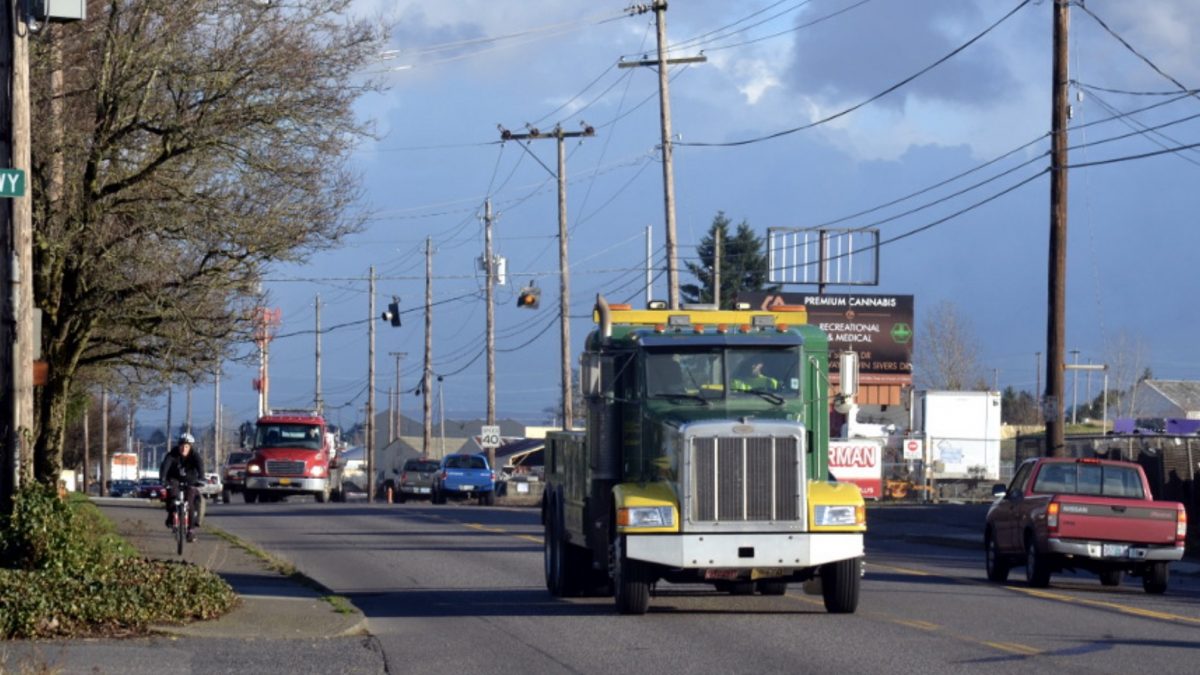
(Photo: Michael Andersen)
A plan that could unlock vast potential in a corridor that’s vital to cycling, our economy, and wildlife is nearing completion.
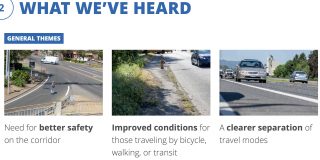
The Portland Bureau of Transportation will host a webinar for the Columbia/Lombard Mobility Corridor Plan on Friday (4/24). The plan has come a very long way since we first covered it in January 2019. The draft project list is out and there’s an online open house and survey that needs your attention.
The area of focus for this plan is about a half-mile on both sides of Columbia and Lombard between I-5 and I-205. It’s an area home to thousands of jobs and many residential neighborhoods. Many of you will also know it as the gateway to Marine Drive and beyond. Currently it’s a very scary place to be no matter what mode of travel you’re using. The high speeds and wide cross-sections have led to many fatalities and serious injuries in recent years.
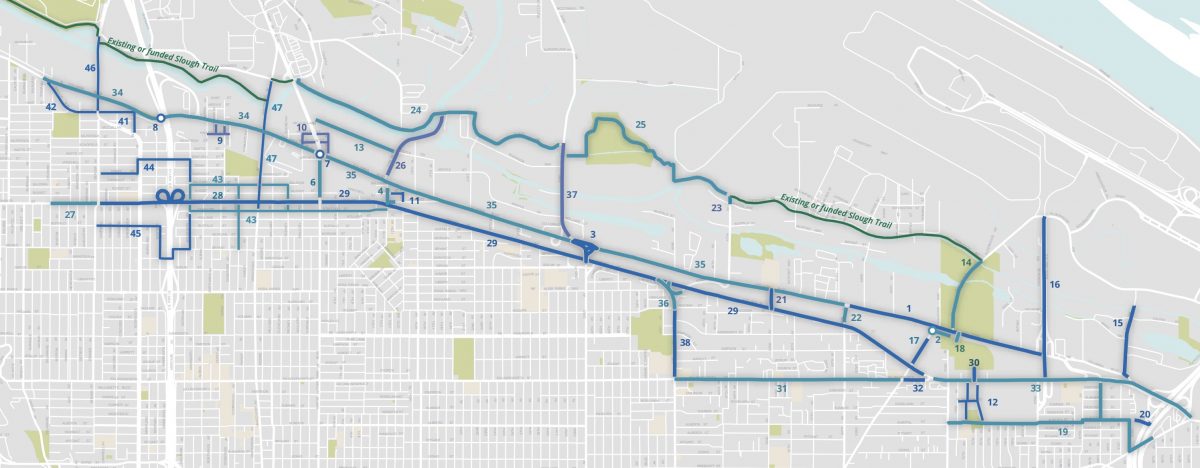
While many of the 47 projects on the draft list (PDF) aim to improve freight capacity and the movement of truck drivers, there are also quite a few projects that would have a significant impact on bicycling and road safety in general. The list includes a major new connection of the existing Columbia Slough Path that would connect N Vancouver Avenue (where it currently ends if you’re headed eastbound) to NE 47th (projects 24 and 25 on the map above). Once complete, the Slough path would stretch from Portland Blvd in St. Johns to Alderwood Road near PDX Airport!
Advertisement
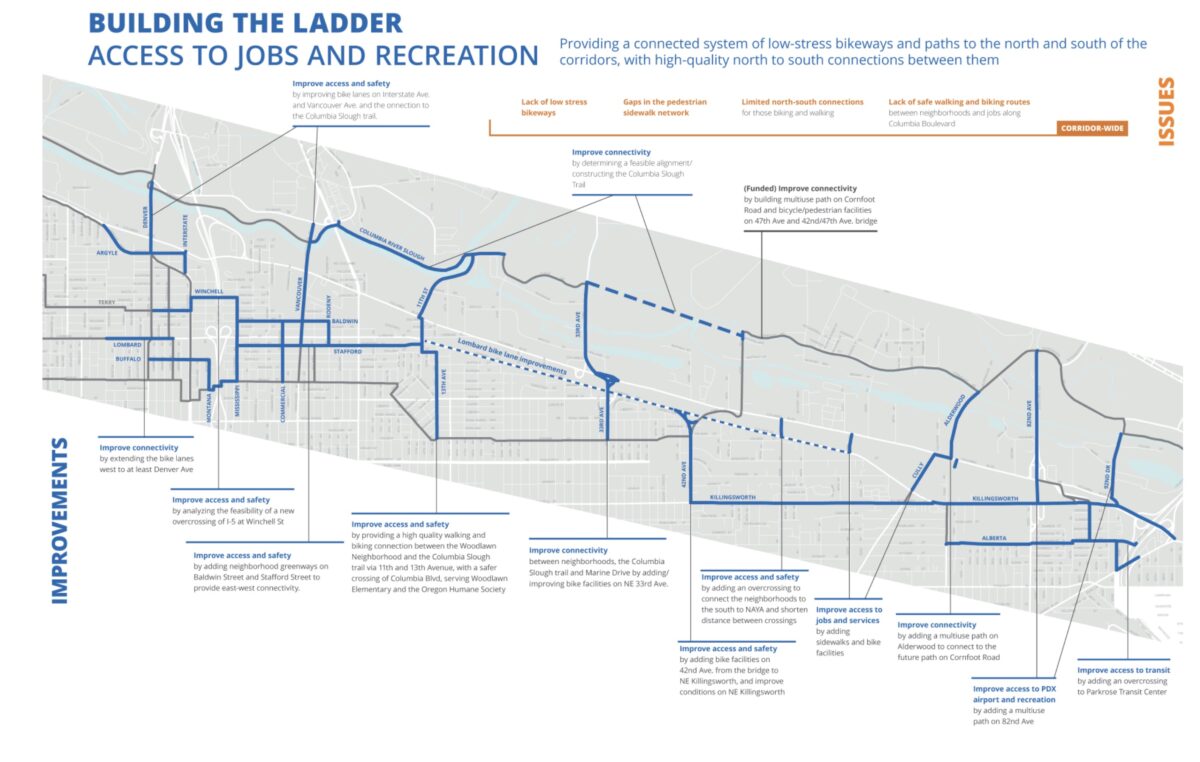
Beyond the typical new pieces of infrastructure and biking and walking safety upgrades along the major streets that help people get through this corridor east-west, PBOT also has a nifty concept for getting people to the area via north-south connections. Many of the jobs and other destinations in the project area (which Columbia Corridor Association Executive Directory Corky Collier refers to in a PBOT video as, “The largest economic corridor in the state” and the “core of our industrial sector”) could be accessible by bike or foot (via transit); but the streets are just too stressful and dangerous for vulnerable road users.
Case in point: We live just a few miles from Oregon Humane Society (OHS) where my teenage daughter has volunteered for many years. Despite our best intentions, we still use a car to get her there. I’m too afraid to cross Columbia by bike (I certainly don’t trust her to do it) and the bus access isn’t good or reliable enough to count on.
To make it easier to bike in the area, PBOT is proposing a “ladder network” concept that would include mix of new neighborhood greenways, protected bike lanes, and paved paths (see graphic above). Among the projects being considered are: a new carfree bridge over I-5 at North Winchell (north of Lombard), a “high-quality” cycling connection on NE 13th and 11th between Woodlawn and the Columbia Slough path (that would get folks to OHS), a new multi-use path on 82nd to connect to the airport, and more.
The goal of the plan is to come up with a prioritized list of projects that can be built once funding becomes available. Before you shake your head and think that will never happen, remember that this plan will be heavily backed (both by lobbying and pocketbooks) of freight-related interests. That should add urgency to whatever gets adopted.
If you want to learn more about the plan, check out the project website and/or join PBOT in a virtual webinar this Friday the 24th from 12:00 to 1:00 pm. You can sign up for the meeting link here.
PBOT’s video below is also a very good (and watchable, nice work PBOT!) intro to the project…
— Jonathan Maus: (503) 706-8804, @jonathan_maus on Twitter and jonathan@bikeportland.org
— Get our headlines delivered to your inbox.
— Support this independent community media outlet with a one-time contribution or monthly subscription.


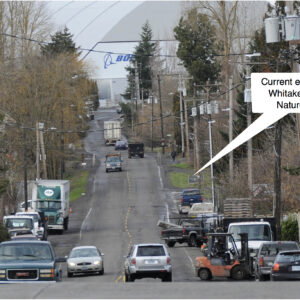
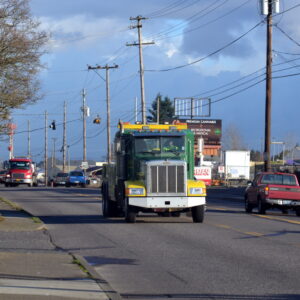
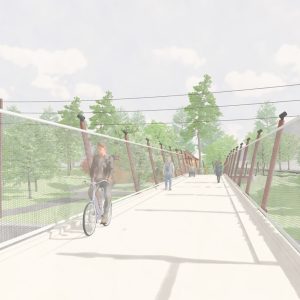
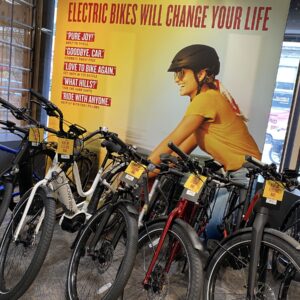
Thanks for reading.
BikePortland has served this community with independent community journalism since 2005. We rely on subscriptions from readers like you to survive. Your financial support is vital in keeping this valuable resource alive and well.
Please subscribe today to strengthen and expand our work.
Dang, I read the headline and thought there was a proposal for a new “I-5 arterial bridge” to Jantzen Beach / Hayden Island…to take freight and local trip pressure of the the “regional cluster ___ job” (aka friction and high crash frequency) that the Hayden Island (and Downtown Vancouver) ramps create.
I also got prematurely excited, envisioning a transit/bike/ped-only bridge across the Columbia.
The rest of this *is* very exciting!
That was also my first take on the title. 😉
Gotta get me a Peterbuilt!
Sadly, it may be a while until you can buy a Peterbilt bicycle…you might have to get a motorized one for now…
But there are many longhaul truckers who like to pack a bike on their trips:
https://www.thetruckersreport.com/truckingindustryforum/threads/how-to-carry-a-bicycle-on-your-truck.87316/page-2
Finally some good news!!!! I’m super stoked on the potential for a non-car bridge !!!
Thanks for all of your reporting.
Hey, my teenage daughter is a long-time volunteer also and we share the same exact concerns. It is too bad this won’t help them out. I imagine it will be years before completion.
I’m remembering a time when kids without tracking chips dared each other to do the thing that everybody knew was dangerous.
Now, I don’t even like to drive a car to the Humane Society. Awful spot.
And about that headline, I’m guessing about 85 % read it wrong. Some of us can’t stand too many more shocks to the system.
headline: new car-free bridge over I-5
A car free bridge on Winchell is my wildest dream. It fixes the horrible Lombard/Hwy 30 connection across I5 and essentially (selfishly) makes me a resident of Kenton. I can’t imagine how residents of this neighborhood felt when I5 tore a gulch through the middle of it. It seems like an area that provides many lessons on what not to do.
My wildest dream is a full cap over I5 that supports residential housing.
The Slough Trail is a good idea. The north side of Portland is actually a very scenic area but undoubtedly the soft ground conditions and propensity for occasional flooding is what turned off earlier builders. Getting bike riders separated from heavier traffic areas should help with safety. This could also be done on the west side, but would take some creative engineering.